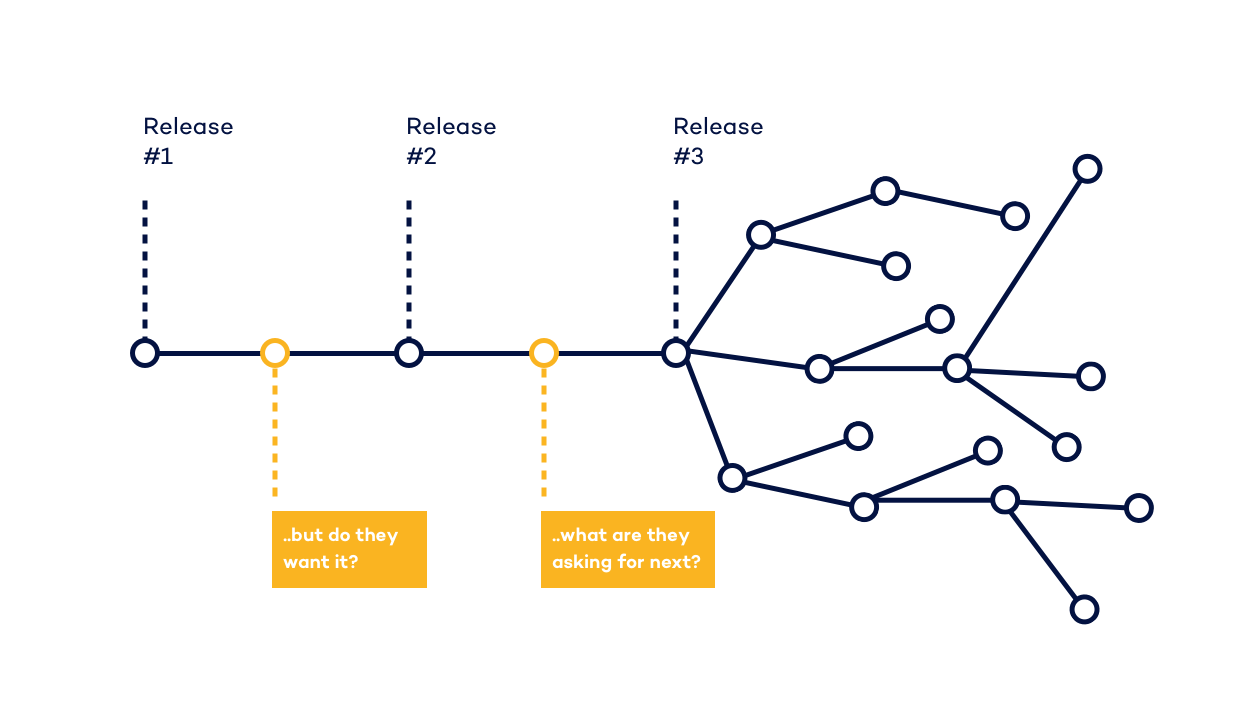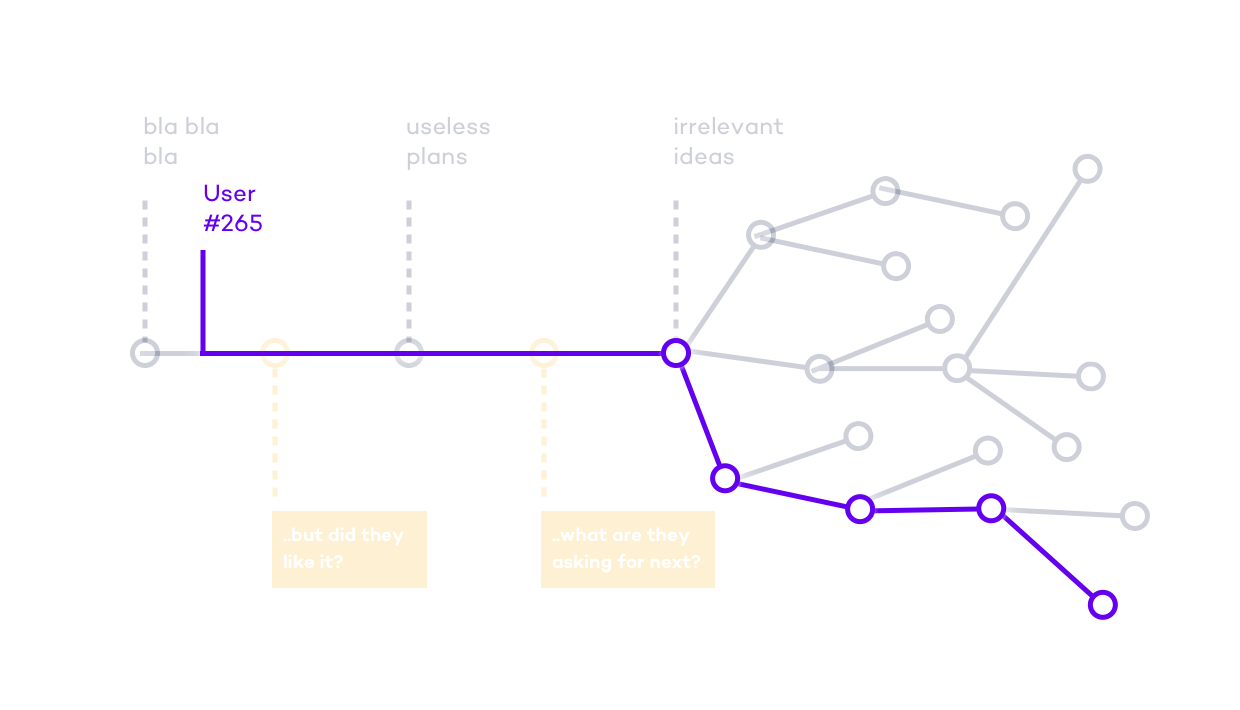What’s hidden beneath Pokemon GO’s MVP and initial bad feedback?
When it comes to planning MVP features, it can be soul-destroying to see some of your sharpest ideas set aside for a ‘future release’.
But it’s imperative to prune your project at each stage, ensuring that you deliver your core proposition without any distractions. It’s easy to tell yourself:
Users have come to expect bells and whistles – and our competition has them in abundance! We need to have bells and whistles!
…but it just isn’t true. Users don’t stay for the decoration and polish. They stay because you’re solving a problem for them.
This doesn’t mean that users are blind to design and features. Not in the slightest. Rather, these are the aspects they are most consciously aware of. They may even be unaware of the real value – the problem that you’re solving.
Case in point: 2016’s headline-stealing “Pokemon Go”.

You don’t need to be the very best to imagine the roadmap for a mobile game like this:

Now let’s play the role of Product Owner for Pokémon GO after its first release. What kind of feedback does the Twitter community have for us?

See! These users are publicly frustrated by our product. This is terrible press. I told you we needed to finish it first!
Au contraire, my imaginary best friend. Let’s take a step back and look at what frustrates people:
All frustration is the result of an unmet expectation.
So, how are we blocking someone’s will or goals with our product’s first release? Users have found a frustration with our offering – what is the source?
Potential
For a user to have become frustrated by our product, they must be excited by its potential.
They have joined at Release 1.0, considered their desired trajectory for our product, and found themselves frustrated that what they want doesn’t exist yet.
We have unintentionally blocked their will – they already know exactly what they need!

Turning frustration into features
Whether you receive your criticism publicly (as popular digital products do) or in quieter email threads and live chat, your next step is to turn this feedback into well-considered features for your road map.
We advise some sensible steps to help you manage the product development process:
Acknowledge feedback and make plans in public
Your users need to know that their voices are heard, and that you’re listening with open ears. Depending on the size of your product, this can err on the side of community management – but on a smaller scale it just means staying on top of replies.
Customers also respond positively to public roadmaps. Transparency breeds trust and clarity. You’ll also receive more informed feedback from your users when they can see the bigger picture.
Identify bug fixes
Features that don’t work are your lowest hanging fruit. They are the most glaring problems that turn users away – especially if they make up part of your core offering.
Prioritise the big ideas
- Which requests make the most sense for your product?
- Which will please the largest market segment?
- Which requests come from paying users, or would create paying users?
Ultimately, judging feedback is hard – be careful not to take opinions at face value. Taking time to find the reasoning behind the frustration – positive or negative – will set you on the right path.
Most importantly, engage with your audience and bring them into the story. Getting them to feel like they’re shaping the product with you will get more buy in and keep them on board for longer.